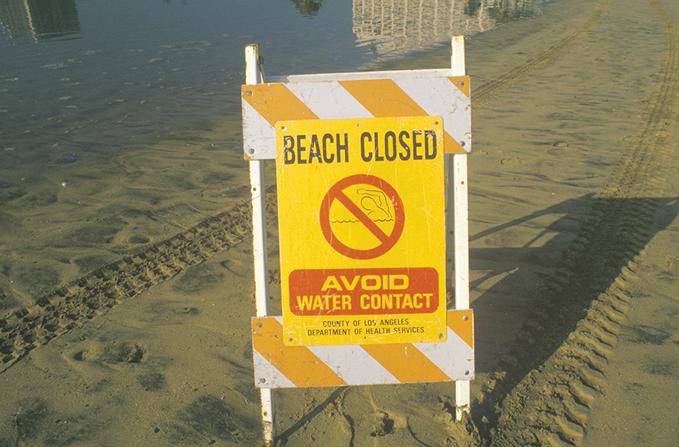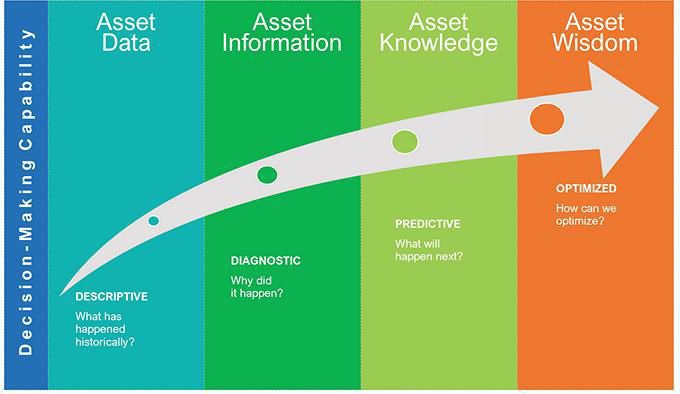Diagnosing With Data To Move From Time-Based To Predictive Maintenance
By Mary Conley Eggert and Graham Symmonds
Predictive machine-condition monitoring and analysis is being picked up by the water sector now that some barriers to entry have been knocked down.
The scenario is familiar to all of us: A system component has failed, and the primary mission of the system has been put at risk — potentially endangering human health or the environment. The clock is ticking as teams assess the impact of the failure, locate spares, or mobilize staff and resources to make a repair. In doing so, other systems are stressed — possibly above their normal operating parameters — and staff may be required to enter a hazardous situation — all to bring the situation under control. In the aftermath, the costs will be tallied — overtime, contractors, expediting shipping of repair parts — and the questions will follow.
Now imagine that this critical component had started to exhibit signs of potential failure weeks ago. The data signature of failure was identified and analyzed, concrete maintenance recommendations were provided, and the component is scheduled for maintenance in a planned manner without impact to operations. This is the power of machine-condition monitoring and analysis, a key element of predictive maintenance.
Historically, predictive maintenance was adapted from reliability-centered maintenance, which came from the aerospace industry, where the failure of large, expensive machines had the potential to immediately produce catastrophic events. Manufacturing and military adapted it to maintain critical systems — gas turbines, steam turbines, nuclear power plants, large-scale pumps and motors, compressors, etc. — and automotive incorporated it to save money on warranty tickets and reliability issues. The costs to put these programs in place has often priced the water sector out of this valuable capability, despite the direct connection between a well-run utility and the health and well-being of the residents and the environment.
The advent of low-cost sensors and communication devices combined with artificial intelligence-driven analysis is now changing that paradigm, opening up the opportunities for advanced, predictive machine-health analytics to the water sector. For example, a San Diego-based firm, VIE Technologies, is providing Prediction-as-a-Service solutions whereby users can monitor their machines simply by subscribing to the VIE platform. For the water sector, this is ground-shifting: providing the advanced tools of predictive maintenance for any size of machine at a low cost of entry and low cost of operation.
The Path To Predictive Maintenance
The water sector is unique because it comprises an amalgamation of relatively small systems connected by transmission and distribution networks. This lack of scale means that the sector’s machines are relatively small and distributed across a large geographic area. Unlike concentrated industrial processes, much of the sector’s equipment is unmonitored and relegated to a repair-by-replacement (RxR) maintenance philosophy.
This perspective is changing. “Water regulators are starting to know more about predictive maintenance,” says Jim Fischer, who provided regulatory oversight for California’s State Water Resources Control Board prior to opening Fischer Compliance, LLC. He now aims to help operators intelligently address the maintenance and compliance issues and avoid unexpected downtime and spills. “When things happen, one of the first questions asked is about the data. What was available and what could have been done to avoid the problem or discharge?”
Regulators know OEM manuals typically state periodic frequencies and certain maintenance intervals, which is fine, but you could be missing opportunities to collect more data for “watching” your systems more closely to ensure component failures don’t expose you to unexpected violations, possible financial penalties, and negative public attention, says Fischer. He recommends Ramesh Gulati’s Maintenance and Reliability Best Practices as a must-read for managers who are seeking insights or support for investment in predictive maintenance.
Industry research suggests that prevention costs one-sixth the price of recovery when maintenance efforts safeguard against weather events or pump failures. While the cost of monitoring devices has declined in the last decade, experts recommend assessing an asset’s criticality. It’s possible the cost of failure may suggest monitoring even when a replacement asset cost is low.
Monterey Bay Spill Prompts Innovator To Take Action
This was the case in 2015, when a small, inexpensive valve failed in a large California sewage treatment plant. Two-hundred-twenty-thousand gallons of waste spilled into Monterey Bay, and losses escalated into the millions of dollars.
The news story caught the attention of technology executive Rahul Chaturvedi, who set out to ensure something positive also flowed from the disaster. His vision was for a system that could predict and prevent mechanical failure, and do it inexpensively. The vision led to the birth of VIE Technologies in 2017.
Chaturvedi is now solving the problem Monterey Bay faced by offering operators a cost-effective means to assess the health of the equipment in these critical systems. Prediction-as-a-Service integrates vibration sensors with advanced machine learning to provide noninvasive, highly reliable, and accurate assessments of the condition of rotating assets — pumps, motors, chillers, cooling tower fans, etc.

Pandemic Places Priority On Uptime
Uptime has never been more critical than now, says Fischer. “Operational continuity plans are not yet specifically required by the California Water Boards or U.S. Environmental Protection Agency, but they could be on the horizon, based on lessons learned during the pandemic.”
Hardeep Anand, founder of the Resilient Utilities Coalition (RUC) and the OneWater Academy, agrees with Fischer on the need to develop plans based on lessons learned. Based in Miami, Anand established RUC in 2016 to support such sharing among utilities. In 2018, he identified a need to more fully bridge the learning and innovation gap by better preparing the water sector workforce, which led to the creation of OneWater Academy. “A resilient water utility needs to mitigate risk and quickly respond to unexpected threats. Real-time data is required to support such decision-making,” says Anand, adding, “Education of the workforce is paramount to addressing the issue, as decision-makers at the water utility level must be conversant with the best ways to employ the collected data to improve resilience.”
“Utilities are following a natural progression, securing the asset data, and then diagnostic information, predictive insights, and finally, optimization of assets,” says Anand. (See Figure 1.)
The City of Sacramento’s Operations and Maintenance Superintendent Royce Bedrosian took a similar path. Bedrosian came from the automotive industry, which has been leading the movement toward predictive maintenance. After working on engines and autos, he found himself leading computerized maintenance management systems (CMMS) and reliability-centered maintenance (RCM) for the city’s Department of Utilities, managing 50- to 60-year-old pumps and a 130-plus-year-old collection system.

Figure 1. Asset Management Optimization Continuum, courtesy Resilient Utilities Coalition
“It’s a culture shift for our teams, and we are driving the change from the maintenance teams on up,” says Bedrosian. “The field crews know these pieces of equipment and are using standards and data to create a health program for each machine.
“We went from quarterly scheduled maintenance where we were checking boxes to condition-based maintenance where we were using handheld systems that trigger alarms and track and record data,” says Bedrosian. “As an example, we deployed thermal imaging to check our equipment and were able to identify a high-temperature condition. This identification saved us $35,000 in repair costs as we were able to intervene before the potential failure progressed to a catastrophic event.”
Whether following best practices or implementing real-time monitoring systems, utilities are stepping onto the path to predictive maintenance. The benefits they are experiencing are many: maximizing the utility and useful life of assets while increasing resilience and minimizing waste. Along the way, utilities are saving manpower, time, and equipment losses associated with unplanned outages.
Most importantly, the risk of contaminants in our lakes, streams, and oceans can be addressed as Chaturvedi envisioned, with data providing sufficient notice to fix potential problems, preventing harm to our citizens, economies, and environment.
About The Authors

Mary Conley Eggert is the executive director of GlobalWaterWorks, an online community focused on accelerating the adoption of smart and efficient water technologies. Eggert brings 25 years of digital marketing expertise to the water industry and is focused on connecting drops of interest for waves of impact via collaboration within focused groups in the community and through local events.
 Graham Symmonds is a water industry expert at GlobalWaterWorks, providing his deep industry knowledge, expert analysis, and market insight to help companies commercialize their solutions. A machine-health expert for the Royal Canadian Navy, Symmonds is now a prolific writer and speaker. Prior to joining GWW, Symmonds was utility manager for Algonquin Water Resources of America, responsible for all business, technical, and regulatory operations.
Graham Symmonds is a water industry expert at GlobalWaterWorks, providing his deep industry knowledge, expert analysis, and market insight to help companies commercialize their solutions. A machine-health expert for the Royal Canadian Navy, Symmonds is now a prolific writer and speaker. Prior to joining GWW, Symmonds was utility manager for Algonquin Water Resources of America, responsible for all business, technical, and regulatory operations.
